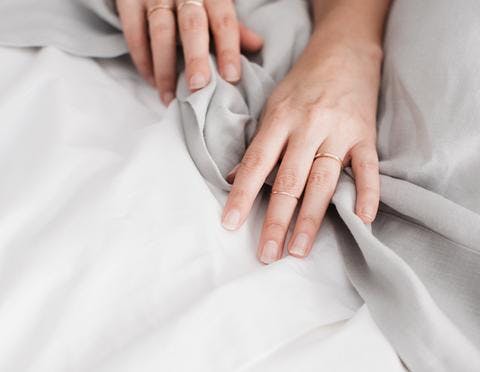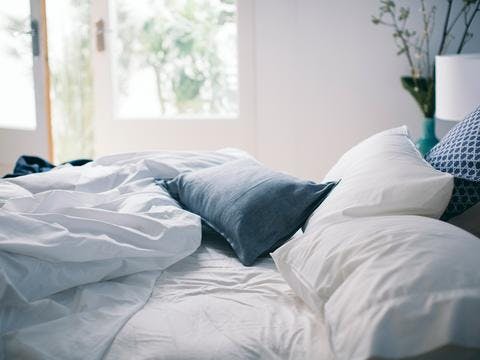Bed sheet health guide


Hey all you linen launderers out there….that’s right we’re talking to you!
If you sleep on a bed with sheets (hopefully that’s everyone reading this) then we’ve got some useful information to share. In fact, this information may actually influence your linen washing behaviours and frequency. Let us assure you, before we start, that no one is here to judge, point the finger or shake their heads. I’m sure we’ve all been guilty of leaving our sheets a little too long before throwing them in the washing machine. Undressing and redressing the bed with new sheets can be the chore that really tips you over the edge at the end of a long day. But hopefully, once you’re equipped with the right information, you’ll find the motivation to make the time!

Between the Sheets
So you shower every day, wash your hair a few times a week, you think you’re doing ok with your personal hygiene. You change your bed sheets and your pillowcases every few weeks and you’re comfortable with your cleanliness right? Well you could be mistaken. According to Dr Philip Tierno, Jr., Director of clinical microbiology and immunology at New York University’s Langone Medical Center your bed sheets can accumulate dirt, dead skin, mites fungus and bacteria after just ONE night’s sleep.
One study into fungal contamination of bedding found that the typically used pillow between 1.5 and 20 years old (both feather and synthetic) can contain between 4 and 17 different species of fungus. Which makes sense when you consider that we produce over 98 litres of sweat each year and we spend approximately 8 hours every day between the sheets. It’s no wonder that the bed can become a pretty filthy place. Further research is being done to determine the actual environmental health risk of fungi growing on bedding - it’s possible that fungal products in bedding could affect the airways of young children at an important time in their development.
Regardless, it’s possible that unclean bedding may expose you to materials that could trigger sniffing and sneezing, since the microbes are so close to your mouth and nose that you’re almost forced to breathe them in. With or without allergies, you can still have an allergic response. And it’s not just respiratory issues such as asthma or allergies that you need to worry about either. Dirty bedding can be responsible for causing break outs, skin irritations and even illness.
So how often does bedding need to be washed?
You should wash your sheets ONCE A WEEK. If you can, dry sheets and pillowcases in direct sunlight - UV light can be effective in killing micro-organisms.
Cleaning guru Shannon Lush, says that pillowcases should be changed every second day without fail. If you think about it, your hair holds more dirt than any other part of your body and yet your face is in constant contact with the pillowcase throughout the night. The pillow collects old skin cells while we sleep and therefore can be a major cause of blackheads. A hot iron, on the cotton setting (at 200C) can also kill any leftover bacteria.
Regular cleaning of the sheets, quilt covers sets and pillowcases prevents a build up of fluids & funghi (as mentioned above) which means there is less chance of these nasties seeping into the actual pillow, doona and mattress. After all, the laws of gravity would suggest that all that debris will eventually settle on the mattress! Obviously the doona and pillow are more difficult to clean and try then the linen, and the mattress, well, that’s another job entirely. Nonetheless, it is important to wash your doona and pillow occasionally too.
Our top 5 cleanliness tips:
- Try washing your quilt in the bathtub with a small amount of shampoo and luke warm water then hang to dry on the clothesline in a U shape (to prevent compacting).
- Next time you’re making rice, save the cooking water and pour into a jar: one part rice water to four parts regular water, and add two tablespoons during the final rinse of your bed sheet. Who knew simple rice water would be the answer to achieving that ‘hotel sheet’ crispness. Apparently the rice water also helps sheets absorb sweat better!
- Ensure you use mattress and pillow protectors. Without protectors, fluids such as sweat and proteins such as human skin would be absorbed directly into the mattress. How often do you really want to be cleaning your mattresses?!
- After washing, dry bedding in direct sunlight.
- Lastly, run a hot iron over pillowcases to kill any leftover bacteria. Make ‘clean’ into a routine and hopefully you’ll enjoy happy and hygienic sleep!